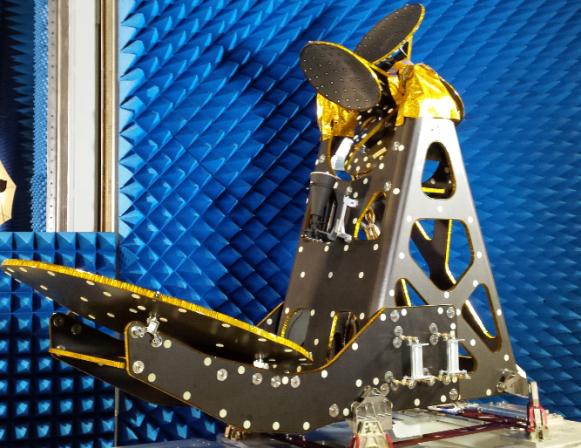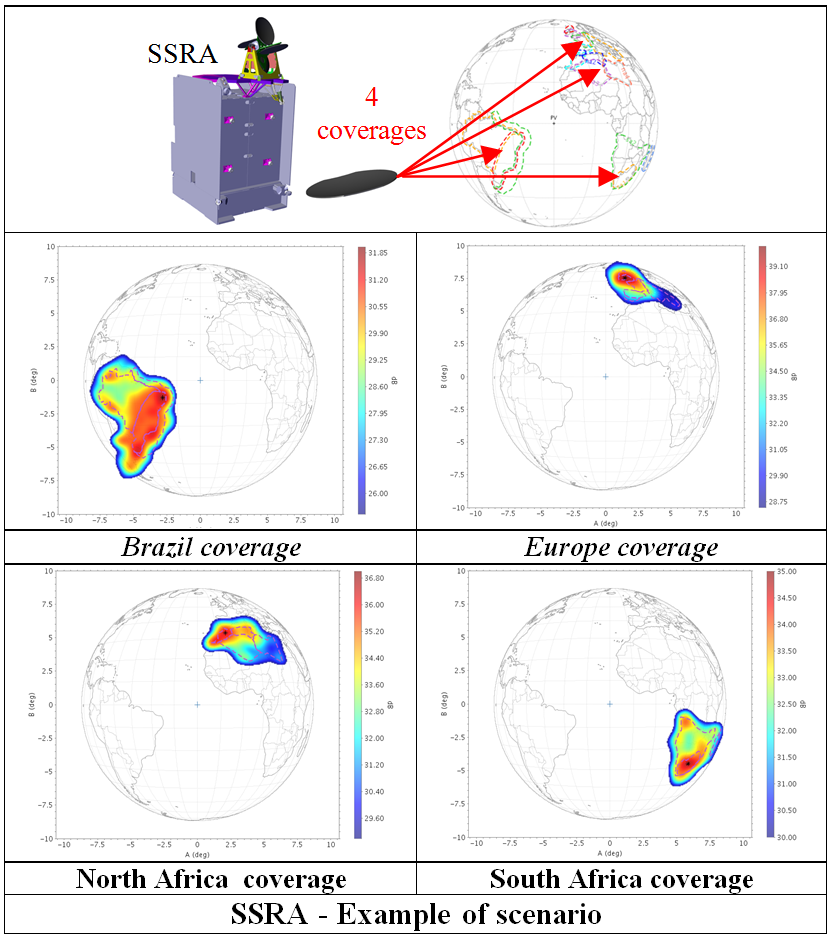-
StatusCompleted
-
Status date2016-08-24
Satellite operators are pushing for a competitive communication satellite industry. On one hand, they look for rationalizing their fleet and require both price and schedule reduction. On the other hand, to keep market shares, satellite operators call for more reactive and versatile solutions to quickly grasp new markets and to adapt to the short-term evolutions. Satellite industry shall take up the challenge by improving both current telecommunication satellites and offering new generation of satellite technology, more flexible and able to address new markets.
In term of flexibility, there is not a unique antenna solution for all applications. The degree and nature of flexibility within telecommunication satellites nevertheless depends on the final needs. The flexible antenna solutions shall be a compromise between the levels of achievable RF performances flexibility and some other driver parameters like cost, mass, power budget...
This ARTES3-4 project aims to develop an antenna solution keeping the advantages of the “conventional” solutions (antenna RF efficiency, power handling, heritage and risks minimization, cost ,…) and answering at the same time to coverage flexilibity needs in Ku band.

The qualified top floor version of the SSRA Antenna reaches its limit in terms of antenna geometry. Considering the mechanical loads to be withstand with the current geometry, it cannot be envisaged to extent the geometry (reflector diameter and focal length) to get better RF performances. This requires to envisage a SSRA in satellite lateral deck configuration which has been proposed and studies in the frame of a CCN of ARTES3-4 SSRA contract.
The purpose of this proposed CCN is to perform the relevant derisking activities which will allow to develop then a lateral SSRA PFM without the need to have a full qualification of the product. This approach can be followed as the SLA (Selected Line Assembly) has been qualified on the top floor product. To be able to develop on telecommunication program a lateral SSRA PFM, the SLA concept shall remain the same or close to the one of top floor SSRA. The proposed design is based on existing and qualified technologies and building blocks in order to avoid a new qualification.
The antenna architecture trade-off has been performed on Spacebus NEOSAT platform to maximize the antenna size to be implemented in such SSRA antenna in lateral side while respecting the fearings and kinematics constraints. The RF performances have been assessed on three scenarios with FSS and BSS bands in taking into account the defocusing of the main reflector during the re-pointing toward mission. The preferred architecture was finalized in term of CAD with a focus on the structural part of the SLA and sub-reflectors, mechanical analysis to validate the loading levels on the SLA and the thermal control definition.
The major concern of the project is the definition of an antenna structure being able to withstand the mechanical launch loads. The product shall be developed with the purpose of being compatible of several platforms, the mechanical solicitations vary from a platform to another and so the antenna shall fulfil the envelope mechanical requirements.
In addition, the re-use of existing rotary actuator without delta qualification imposes to master and optimize the thermal control of the antenna.
The product developed in the frame of this ARTES3-4 project will complement Thales Alenia Space “in orbit missions flexibility” solutions portfolio with an antenna solution based on conventional technologies and building blocks (CFRP reflectors and structure, feed, rotary actuators) offering high RF performances (large bandwitdth, PIM free, able to work on all Ku band spectrum with a tri-band feed). This new antenna product will help Thales Alenia Space to propose a discriminant antenna solution.
With the increasing of the HTS and VHTS markets, the SSRA can offer complementary missions to the multi beams antennas with a DTH mission. Thanks to the repointing function with the main reflector, the operator can choose one mission among four predefined coverages compatible with the orbital position.
The Selectable Sub-Reflector antenna is in dual optics Gregorian configuration. The main components of the antenna are :
- A Large bandwidth feed (operating in transmit and receive)
- A CFRP main reflector
- 4 CFRP sub-reflectors (each one shaped to generate a specified coverage)
- An Antenna Pointing Mechanism under the antenna for steerability on the whole earth
- A Selection Line Assembly (sub-system allowing the selection of the desired sub-reflector)
- Hold Down and Release Mechanisms
- A CFRP antenna structure
The antenna is accommodated on the earth panel of the satellite. The main reflector is optimized for all the specified coverages. In both cases, each sub-reflector is optimized for one of the specified coverage.
The reflector technology and most of the antenna components are based on TAS heritage. The Selection Line Assembly is defined to allow the re-use of existing rotary actuator in order to avoid a specific development or a delta qualification.
COVERAGE FLEXIBILITY
SSRA is designed to address DTH missions with FSS+BSS bands, it allows to select mission in orbit among 4 pre-defined coverages with the possibility to add isolation area.

The activities of the project are organized according to classical development phases. The main steps of the development are :
- Requirements consolidation
- Antenna architecture consolidation (tradeoff between several potential technologies for the antenna structure, the objectives being to define the more competitive solution)
- Preliminary design and analysis (RF, mechanical, thermal, functional)
- Detailed design and analysis
- Manufacturing of the EQM
EQM testing
Completed
Detailed design and analysis have been done. The antenna EQM has been manufactured and assembled. All the qualification tests have been performed. This qualification test campaign includes :
- 8 thermal cycles in Nitrogen
- Acoustic test
- 3 axis Sine test
- TED testing
- TVAC + Life test
All the tests performed are successful. The thermal control defined during analysis phase has been validated. The acoustic test allowed to demonstrate that the rotary actuator used to select the relevant sub-reflector is well suited for SSRA. The sine test performed covers the mechanical loads computed during coupled load analysis. This confirms the compatibility of this new antenna product with Spacebus platforms. This ARTES34 project allowed to develop and qualify a new flexible antenna product. This new antenna solution is available for telecom programs.
CCN2 has permitted to well analysed the SSR Antenna configuration using a lateral side accommodation configuration on the SPACEBUS NEO 100 & NEO 5FL platforms. The solution implemented on the S/C lateral side appears as a competitive mechanical concept, in alternative to Electronic reconfigurable antennas. For the RF, such SSR Antenna geometries in lateral S/C side configuration permits to notably enlarge the performances.
The Thermal aspects present no major encountered difficulties. An active thermal control is necessary for the SLA as proposed on SSRA in Earth deck position without delta qualification. For mechanical aspects, SSRA implemented on S/C lateral side, has induced major modifications driven by the antenna increased geometry with the necessity to perform complementary qualification.



